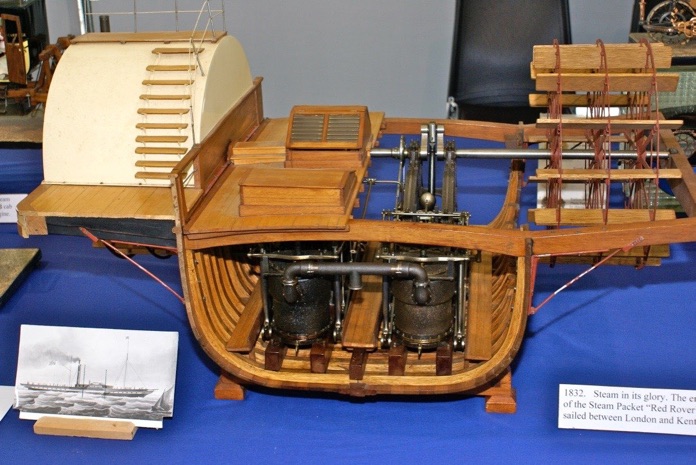


Model engines of the Steam Packet Red Rover, 1832, which sailed between London and Kent on display at the great Centenary Model Engineer Exhibition, 2007, which filled the quarter mile long stand at Ascot Racecourse. That exhibition included the entire collection of Ron’s models - nine of which had won gold medals - plus complete collections of the other great model engineers of the day.

All of Ron’s models were from the earliest days of the industrial revolution - mainly steam and early electric power. Many were fortunate enough to meet him at the great Centenary Model Engineer Exhibition at Ascot where all of his models were on display and where he spent hours talking to visitors. All his models have since moved to a permanent home in the Robert Guinness Steam Museum in Ireland.
When he retired from his career as an electrical engineer, Ron looked around for a hobby “which did not involve the complexity and the inaccessibility of modern electronics.” he was drawn to the first simple steam engines built between 1760 and 1840 and went on to build a dozen of those - none of them machines that “hit the headlines” but which were unique or unusual even in their own time.
Information about the machines was gathered from a variety of contemporaneous sources; letters and reports, newspaper articles, etc. Mechanics Magazine was launched in 1817, published weekly, and containing mainly letters from amateur scientists interested in everything from acupuncture to water closets. It also included news items about machines being developed and today is a rich source of material to modellers like Ron Jarvis and Cherry Hill.
His other great source was the Patent Office. Patents were first granted in 1700 and within 100 years more than 3000 had been granted.
In those early days there were no engineering drawings as such. Ron also found other problems with Patents which were often applied for before a prototype had been built. By the time the inventor had made it he would have incorporated many changes and improvements so that the machine could be very different from the earlier description. That meant more research to ensure that models were good copies of the originals.

“This was a problem that I had to meet by making changes where they could not be seen, usually to the works inside the machines. Where is was not possible, a difficult balance had then to be struck between a model which looked right and one which worked right.”

